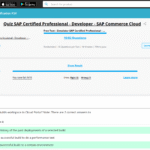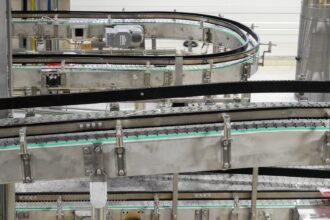It’s not hard at all to find a car on the market or car auction in the USA today. At the same time, buying a vehicle turns into more of a research process to avoid making a fatal mistake. That’s why we’d like to share the recipe for a successful purchase of a vehicle that shouldn’t only transport you from one point to another but also meet other important needs (safety systems, multimedia functions, fuel economy, and so on).
So what are the typical mistakes when looking for a new car? Let’s dive into the topic and clarify it.
Not Thinking Long Term
The first common mistake is not considering how much our lives or routines may change in the future. Many times, we only think about the car that we need at that moment. Perhaps the creation or expansion of the family in the future will lead to the need for another vehicle. The available work can also be dynamic and may force a change of office, district, or even city.
It may also happen that short trips turn into long journeys, or it’s necessary to travel to other cities with traffic restrictions on a certain mode of transport. All this must be taken into account because, in many cases, it’s impossible to change the car after that, or it’s very unprofitable at the economic level.
Buying What You Like, Not What You Need
Another very common mistake is to fall in love with a car because of how beautiful or impressive it is, but in reality you don’t need this automobile, or it doesn’t meet your expectations.
Along with that, driving a car becomes a routine, and after the novelty wears off, everyday life calls for a practical vehicle that adapts to your needs.
Of course, this doesn’t mean that you should give up the car that you like. You just need to choose the one that meets all or most of your requirements. And yes, priorities appear.
Not Analyze Pricing
Sometimes, the final price of the car seems affordable or, on the contrary, excessive for our capabilities. However, when you examine your financial situation, you may discover that things aren’t as they appear.
Always look at a purchase from multiple perspectives and explore different financing options, not just those offered by the dealer.
Not Clarifying Engine and Fuel Type
You have already selected the right type of car based on size, budget, etc. But what about the engine? Today, many models have all kinds of units, from diesel and gasoline to hybrids and electric in various configurations. Of course, everything depends on the budget, since obviously the latter will be more expensive, but the mode of use in which the vehicle will work is also important. It can be the city, the highways, or long or short trips.
All this also affects the required power, because buying a car with a capacity of 200 hp or more for moving around the city means only additional costs for fuel and maintenance. Of course, when purchasing an electric car, you should think about permanent charging locations in advance.
Not Conducting a Test Drive Before Buying
This is a point that many people tend to miss or get wrong and end up buying a car that doesn’t match the points they expected.
On paper, many vehicles may suit your needs, but the ultimate examination, along with the service checkup, should be a test drive. This will ensure that your driving position or visibility is comfortable for you, or that the pedal response, the steering wheel, or even the behavior of the engine, clutch, or brakes suits your tastes and needs.
Each of these vehicle behavior elements differs from brand to brand, even depending on the model. Never make the mistake of underestimating this moment if it is possible to test the auto on the car auctions as well, because it’s really important for your purchase.
Underestimating the Provided Warranty
While a warranty is usually standard in many cases, some brands offer additional coverage and extended free service options.
So don’t underestimate these opportunities, as they can make buying a higher-priced automobile cheaper in the long term because you won’t have to pay for repairs over a period of time or things like that.
Regular visits to the official technical service of one or another brand can surprise you with the price, since there can be a big difference in the cost of parts and labor.
Not Asking About Maintenance History
Currently, some online services already provide simple and useful reports on the history of a particular car.
With their help, you can not only access basic information such as the current owner, date of registration, mileage or model, but also about the presence of fines, accident history or any other problems that may make you shy away from the purchase.
Neglecting the Ownership Change
The last important step in the car-buying process is especially relevant when selling used vehicles between individuals. Neglecting the administrative process of changing the owner can cause further trouble, so it is important to make sure that the car has been re-registered on time.
In these cases, it’s best to contact the official institutions and follow the process carefully so as not to lose documentation or forget something important, which would lead to an unfortunate mistake.
In the End
Well, if you have followed all these steps, there is a good chance that your future purchase will be successful and your new car will bring you a lot of joy. The key points are to be attentive, check the documentation and technical condition of the automobile, and conduct a test drive before buying your next car.















